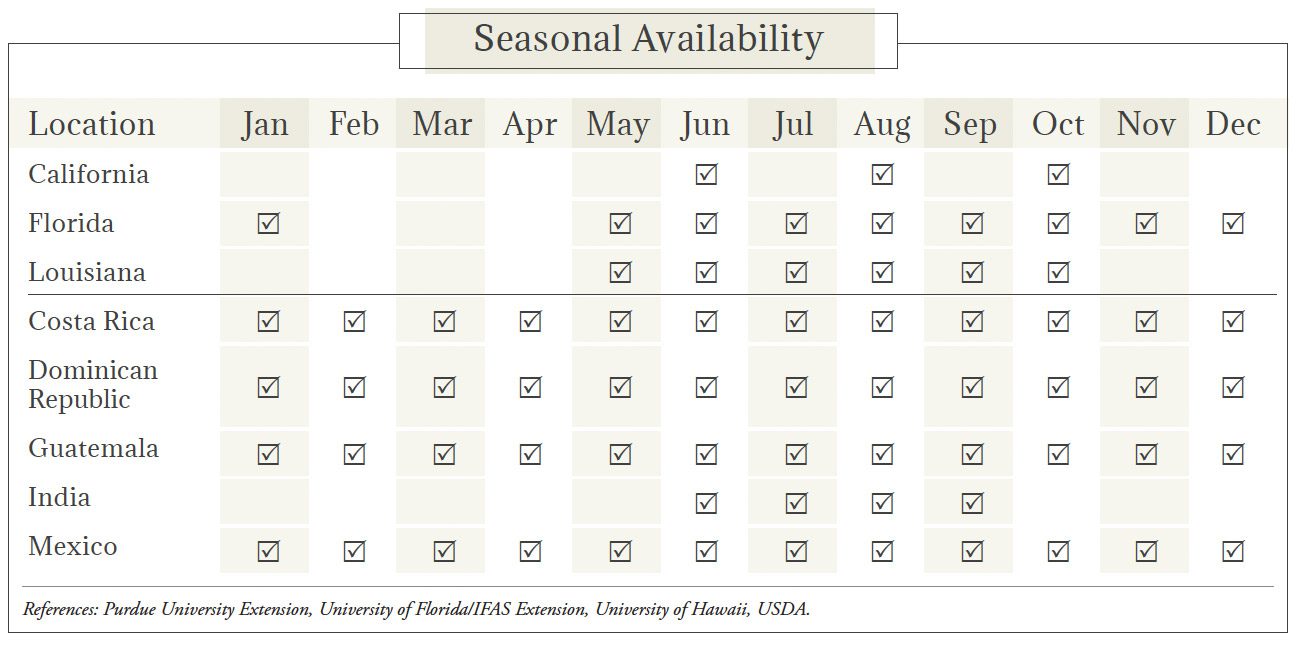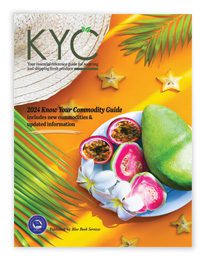Chayote Market Summary


Image: Marotoson/Shutterstock.com
Chayote Market Overview
Chayote, also known as the vegetable pear, mirliton, mango squash, or choko, is a member of the gourd family. Related to cucumbers, this pear-shaped tropical fruit ranges in color from light green to white and has the pleasant flavor of a nutty squash. The tender fruit contains one large, flat seed that can be eaten.
Chayote is a perennial with long, climbing vines, closely resembling a cucumber plant. Each chayote generally weighs between 6 and 12 ounces but can weigh as much as 3 pounds.
Although native to Mexico and Guatemala, chayote has been grown successfully in tropical regions in the southern United States. This low-calorie fruit can be eaten raw, pickled, or cooked. It can be served in a variety of ways, including baked, sautéed, broiled, mashed, fried, buttered, or in pies.
Types & Varieties of Chayote
The primary varieties grown in the United States are Florida Green and Monticello White. Imported varieties are often prickly or hairy with grooves, but chayote grown in Florida typically has smooth skin.Chayote Cultivation
Chayote grows best in rainy, warm conditions with well drained soil. Plants are very vulnerable to frost and prefer nighttime temperatures between 59 and 68°F. Planting on hills, mounds, or other elevated areas (4 to 6 inches deep and 7 to 11 feet apart) will prevent water-logged soil, as will adequate sunshine. The level of sun exposure will cause variations in fruit coloring from pale yellow to dark green. Chayote vines begin to bloom within 4 months after planting. The fruit is typically ready for harvest 30 days after flowering. In commercial fields, chayote is picked just before the seed emerges from the top. Each vine can yield anywhere between 75 to 600 fruit or 50,000 per acre.Pests & Diseases Affecting Chayote
Chayote is susceptible to very few pests and diseases. The most prevalent disease is powdery mildew caused by fungus, which leads to misshapen or unusable fruit. In the tropics, chayote is often impacted by two pathogenic species, Mycovellosiela cucurbiticola and Ascochyta phaseolorum, particularly during the rainy season. The fruit is also threatened by a number of pests that also affect squash and pumpkins, including aphids, cucumber beetles, squash bugs, melon flies, and squash vine borers. Roots of the plant are vulnerable to nematodes.
Storage & Packaging of Chayotes
Chayote is tender, so it must be handled carefully during harvest, storage, and packaging to prevent bruising. To avoid drying out, each piece of fruit should be wrapped individually in a closed container or plastic bag and stored at temperatures between 50 and 60°F with 90% humidity. In these the conditions, it can last up to a month. Chayote is typically shipped and sold in 24-count cartons. References: National Center for Home Food Preservation, Purdue University Horticulture Extension, University of Georgia, University of Florida/IFAS Extension, University of Hawaii, USDA.Chayote Retail Pricing




